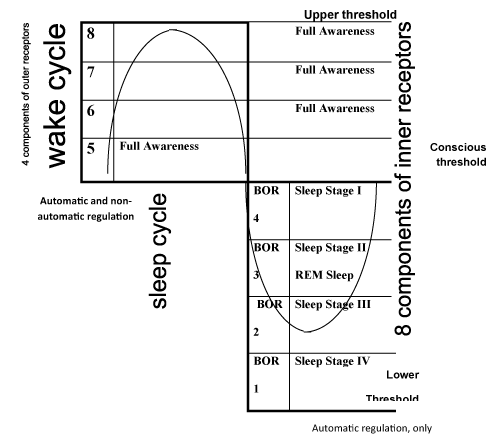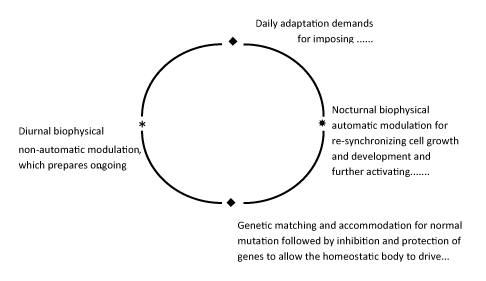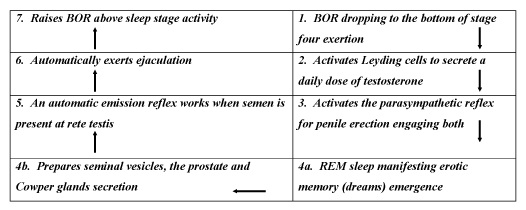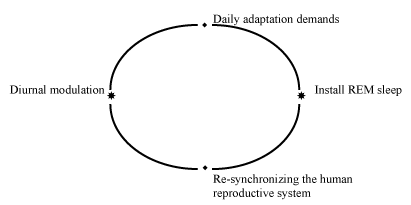
Figure 1: MRI of brain showing infract on Pons

Biophysical Mind-Brain Sleep Regulation in Health and Pathology
Yakov Naisberg*
AMCHA- Branch Netanya, National Israeli Center for Psychosocial Support of Survivors of the Holocaust and the Second Generation, Netanya, Israel*Corresponding author: Yakov Naisberg M.D., AMCHA- Branch Netanya, National Israeli Center for Psychosocial Support of Survivors of the Holocaust and the Second Generation, Netanya, Mendel Singer St. 13/2, Haifa, Israel, Tel: 04- 8341966; Fax: 04- 8341966; E-mail: naisberg@012.net.il
Why people sleep? What kind of kinetics drive human to nighttime sleep phases? What kind of fundamentals night sleep performs? The medical macro biophysical physiological neuropsychiatric operational (MBPNPO) model provides key answers. Human circadian cycles with daytime excitable wakeful body operational ranges (BOR) based on non-automatic velocity-increasing kinetics and nighttime inhibit the macro biophysical physiological mind operational kinetics. It replaces non-automatic into automatic velocity-reduced BOR regulation at sleep phases to sustain homeostatic balance and human life-supporting properties. Nighttime sleep phases carry on fundamental homeostatic functions on resynchronizing cellular and tissues systems, stabilizing intellectual memory with closure of memory storages and activating sexual organs from adolescence on with vivid erotic dreams influencing heterosexual wakeful orientation effects.
Complementary fixed biochemical and biophysical parameters at sleep stage IV, may serve as an individual’s database for comparison in health and pathology, severely influencing all kinds at sleep disturbances.
Body-brain-biophysical mind unity; Circadian diurnal and nocturnal cycles; Evolutionary sleep control over mutated genetics
There is a direct correlation between the urge to sleep and the evolutionary adaptation of Homo sapiens to solar-energy dependence and the circadian cycle [1]. Endogenous rhythms drive the body’s operational regimen (BOR) to diurnal and nocturnal stage-dependent activities [2]. Physiological changes that occur during the sleep stages are responsible for fundamental functions of maintaining human life [3]. Numerous studies asserted that the circadian cycle is made of different daily and seasonal architectural patterns [4] but they failed to establish the prime function of sleep. We present a model based on evolutionary and environmentally induced rhythmic sleep/wake cycles, which maintain growth and the correlation of related hormones, which control the balance of protein, lipid, carbohydrates and water, etc., [5]. This balance guarantees normal alteration ranges in cellular growth and development according to the automatic process which controls the circadian rhythmic of the sleep stages. In modern society, web must secure sleep patterns in order to maintain normal genetic mutation and to enable to resynchronize the sexual reproduction system [6]. The sleep pattern may be adapted to accommodate social demands, which may not coincide with the natural circadian cycle. During sleep, all biophysical negative as well as positive feedback mechanisms automatically optimize the maintenance of the biophysical homeostatic structure and function to ensure ongoing biophysical encoding for normal genetic mutation [7]. The key-concept here is that biophysical encoding on genetic templates emerges out of my long-standing practice that should evidence their presence. One may assume finding nano or micro pits- and tuberculous on memory genetic surface templates analogous with computer –binary encoding.
Modernization replaced classic circadian formations with human collective dark-induced sleep designs. Recent sleep patterns are personalize-related and may follow a multiplex of diverse flexible patterns. The onset of sleep does not correlate with the independent circadian cycle, and sleep periods may be adapted to the individual’s needs. The individual may select an optional trend of sleep intervals, which will sustain the four basic sleep stages [8] which preserve the continuity of core sleep periods; especially stage four, which is responsible for genetic control and reproductive system enhancement and potentiating. Modern medicine promotes self-control over the monitoring of the sleep pattern that must be adapted to various developmental stages basing on subjective refreshed feelings and resting well. The feeling of wakefulness reflects the cardinal signs of homeostasis, which appear after awakening from sleep.
Sleep phase-kinetics run from upper-to-lower homeostatic thresholds that separates non-automatic from automatic body operational regimen (BOR). The key point here is that sleep coordinates environmental ecological and social demands with physiological needs for any circadian cycle. Sleep phases relate to three successive phase-dependent patterns, which function in an automatic manner. A) The restitution phase prepares the BOR to stop non-automatic input from sensory and motor systems and programs BOR to operate on metabolic rates with least possible bioenergy expenditure for the most effective automatic operations. The critical point here is that sleep stage four-kinetics use the least metabolic energy supply. B) The adaptation phase commences at sleep stage four. It enables genetic programming of physiological cells thereby executing accurate daily chronobiological matching for cell-growth and cell-development and exchange and allows for the execution of homeostatic genetic mutation. Moreover, it enables closure of all mind memory storing whereabouts to stabilize intellectual potentials. C) The reproductive system’s enhancement and potentiating phase that begins at REM sleep secures the homeostatic role in sexual function, which aids in voluntary selection of suited pairing for human species survival.
In addition, observation data of the sleep/wake cycles show that biological baseline values comply with laws of Physics:
Figure 1 display the sleep/wake cycle. The diagram shows that the sleep/wake curve may reach its upper and lower thresholds. The conscious threshold emerges during shifts from sleep to wakeful state. The curve may have stable markers under stable environmental and homeostatic states.
The sleep/wake cycle establishes the biological foundations that link all participating biochemical and biophysical parameters of sleep to the body’s operational regimen (BOR) to sustain homeostatic function. These biological foundations base on finite states, wherein all minerals, hormonal components and biochemical within extracellular and intracellular fluid and blood circulation elements are in direct correlation with constant events in any given unit of time. Of course, at transitory homeostatic deregulation (THD) state, either laws of physics or abnormal genetic mutations shift the essences of that harmonized formulae. Evidence displays that BOR kinetics rotate within any circadian cycle with four daytime and four nighttime stages sustaining gradational levels of metabolic bioenergy generation and usage. Thus, the four nocturnal stages together with the four diurnal stages allow us to assume that the organism as a whole complies with physical laws from lower-to-upper and vice versa thresholds in constrained eight level-dependent homeostatic operational patterns. Macro biophysical physiological parameters may hold mathematical recognition patterns under well control of the external and internal stability. Several biophysical negative feedback mechanisms accurately regulate intersystem matching across BOR stages.
Those biochemical and biophysical parameters can arrive to a common coefficient as we proposed in a previous paper [14]. Such method allows us to design a standardized map of correlative biological parameters for each separate stage so that we may obtain coupled quantitative data from the body-brain and biophysical mind-brain physiological kinetics in relation to the onset of sleep, its stages and sleep end.
Figure 1 illustrates the association of sleep with biophysical and biochemical parameters which are located below the resting stage of the body’s operational regimen. Biological signals spark the decline of biological parameters that cause nocturnal stages to replace diurnal stages. The basis for these alterations relies on laws of physics in which any person takes an active part to comply with laws of nature. Normal sleep pattern guarantees homeostatic survival due to circadian cycles through eight-stage kinetics; evidenced with in ongoing ecological and social live event scenarios. Data from sleep research on healthy subjects has shown that the growth hormone is stimulated during sleep stages [15] and that the (HPA) – hypothalamic-pituitary-adrenocortical system precisely follows sleep trends [16].

Figure 1: MRI of brain showing infract on Pons
Findings show that delta-sleep-induced peptide causes delta-sleep promotion [17].
HPA axis promotes the basal secretion activity in healthy aged people [18]. In addition, the research data supports the theory that biophysical physiological sleep orients:
Environmental and biological exchanges have a dominant-tosubordinate inter – action leading to an integrated and synchronized day-night pattern of events, which establishes fundamental physical-tobiophysical cause -effect principles.
These principles help to define the mechanism responsible for sleep emergence and allow us to ask what definitive function sleep performs. Recorded observations assume that the laws of nature structure day-tonight patterns in biological entities. Humans functioning in the circadian cycle utilize the upper curve for diurnal trend activities and the lower curve for nocturnal trend activities. According to this view, circadian curves rely on predictable and unpredictable cause-effect determinants to guide and govern conscious non-automatic or unconscious (biophysical instrumental) automatic regulation. Circadian cycle’s physical translated into biophysical physiological information processing units influence mind/brain determinants to allow sleep formation. Intervals of darkness or onsets of the desired sleep period gradually inhibit human photosensors until they cease to function, thereby restoring homeostatic synthesis with the further stoppage of bioinformation delivery through their specific neuronal networks. Next, the inhibition of other sensory - motor modalities replaces non-automatic (conscious) with automatic (unconscious) regulation of the body’s operational regimen. The exclusion of biophysical conscious mind operations from inactivated neuronal network loop organization prevents bioinformation overloading. Implementation of homeostatic kinesis with minimal metabolic bioenergy usage in the nocturnal stages of the body’s operational regiment enables homeostatic restoration and optimization of neuronal plasticity and stability of novel neuronal pathways to regulate the development of physiological systems including adaptation of neuronal networks. Hence, basal sleep performance rests on biophysical kinetics, optimizing homeostatic BOR potentials, ensuring physiological growth and development in daily life.
The outer environment stimulates with daylight outer photosensors that initiate bioinformation generation and propagation that takes place in neuronal structures for decoding and computation. Human evolution adapts the capacity of visual biosensors to match environmental physical sources in a two-phase pattern for separate and/or combine daytime or nighttime functioning in order to optimize survival. Visual sensors hold full technologic-analog capacity to absorb a visual panoramic-to focus (VPF) paradigm that registers on special occipital neuronal webs connectivity movie-like scenarios.
Visual observation is the gathering of external information for developing bioprograms for intelligent survival in optimal and temporal resolution during daylight only, since human rods and cons are equipped with photosensors for daylight function only. VPF has the potential to perform parallel multi-sensor synchronization with external sources by directing biophysical conscious mind operations to use solar energy and to constrain food intake to help sustain optimal body’s operational regimen based on non-automatic forms of selective adaptation. Inhibition of photosensory activity during intervals of darkness may be used as a bioinformation cut-off from other biosensors as well, leading to complete cessation of conscious mind operations which replace the body’s operational regimen combined (automatic and non-automatic) with automatic only control.
The inhibition of sensory and motor nervous systems separates BOR non-automatic from automatic operations. BOR automatic control includes four sleep stages, which contribute to gradual reduction in bioenergy supply to its minimum level during the nocturnal phase, to help restore photosensitive balance and preventing mind overloading and promoting bioenergy conservation.
Sleep activates the genetic information necessary to maintain the biochronological state for normal growth and development. Biophysical sleep regulates control over biophysical genetic encoding in the process of normal somatic and biophysical gene mutation resulting in adaptation. The sleep pattern enhances the potential of the sexual reproductive system through automatic preparation of the secretory function of the sexual organs thereby optimizing the potential to achieve homeostatic function when followed by voluntary pairing for reproduction.
Schwab and Pienta [20] influenced our modeling signal transduction. The biophysical informative Mind via specialized wiring brain webs govern several negative feedback mechanisms which incessantly drive the body’s operational regimen from wakefulness to sleep according to solar rhythms. BOR exerts automatic control over stage-dependency in sleep and gradually reduces underlying metabolic bioenergy usage until it reaches its lower threshold. BOR exerts automatic control over active genes, imposing a biochronological rule over homeostatic cells and systems at sleep stage four. BOR is also responsible for changing signal transduction pathways in homeostatic cells and systems in order to allow for evolutionary adaptation with normal mutated genes. In this manner, biophysical principles simultaneously regulate genetic programming on the biochronological aging of cells and the accommodation of genetic mutation based on homeostatic changes in cells resulting from adaptation. Daily adaptation needs produce a loop-like operation:

Sleep stage four establishes the basis for the above loop operation. The homeostatic body regulates cellular and systemic growth, development and aging by recruiting the necessary amounts of growth hormone (GH) secreted during each of the circadian sleep stage four intervals [21]. GH regulates protein anabolism and catabolism. It seems likely that nuclear genetic programming screens cellular protein substances for chronobiological balance. Excessive circadian adaptation demands will influence established genetic programming and allow for novel mutation until stability occur.
Males and females have an identical sleep controlling mechanism for re-synchronizaiton of the circadian automatic function of gonadotropic hormones and accessory glands, which promote orgasmic function, crucial for the establishment of optimal conditions for semen maturation, transport and encounter with the ovum. A positive feedback mechanism based on the follicle - stimulating hormone (FSH) interstitial cellstimulating hormone (ICSH) and testosterone levels in the male, and FSH luteinizing hormone (LH), estrogen and progesterone levels in the female maintain the coupling essential effect [21]. The biophysical principle inserts and automatic orgasmic loop operation depicted below:

Biophysical principles cause daily re-synchronization of the sexual reproductive system despite over-stimulation and/or over-inhibition in certain individuals. The automatic mechanism that regulates this process estimates the condition of the sexual system after screening the genetic programs. After securing homeostasis by genetic matching of biophysical principals, the organism advances the checking and re-synchronization of the reproductive system for healthy species survival. Normal daily function of the reproductive system plays a crucial role in sustaining homeostasis as seen in the loop.

One may stress that such loop should get accurate non-automatic monitoring helping chose proper daily acts to sustain healthy sleep stages.
The presented MBPNPO medical model fundamentally explains ‘why we sleep’.
It seems likely that circadian cycle’s life span chronobiology rests on biophysical genetic encoding on the longitudinal activated circadian cycle spirals at sleep stage IV. A similar biophysical genetic encoding regulates speed increasing at daytime and speed decreasing body operational ranges (BOR) at sleep stages. Hence, sleep phases regulate homeostatic biophysical and biochemical genetic mutation, intellectual memory stabilization and heterosexual orientation mechanisms. All those have an automatic sleep control. The later navigates through restitution phase, adaptation phase and REM sleep phase. These critical phases indicate that despite physical information waves undergo translation into biophysical and get reproduce in the sort of biophysical physiological mind derivate, their homeostatic nature guides and governs individuals with compatible social orientations.
Hence, altered sleep patterns may contribute to deranged forms of genetic mutation, to intellectual malfunction and other sexual orientations. Objective electronic data collect from individuals may provide fundamental database monitoring replacement homeostatic deregulated into homeostatic states. Moreover, biophysical sleep regulation holds essential practical implications for keeping healthy patterns, in order to optimize preventive strategies as means in shaping circadian cycles.
Download Provisional PDF Here
Article Type: Review Article
Citation: Naisberg Y (2015) Biophysical Mind-Brain Sleep Regulation in Health and Pathology. J Neurol Neurobiol 1 (2): doi http://dx.doi.org/10.16966/2379-7150.107
Copyright: © 2015 Naisberg Y. This is an open-access article distributed under the terms of the Creative Commons Attribution License, which permits unrestricted use, distribution, and reproduction in any medium, provided the original author and source are credited.
Publication history:
All Sci Forschen Journals are Open Access